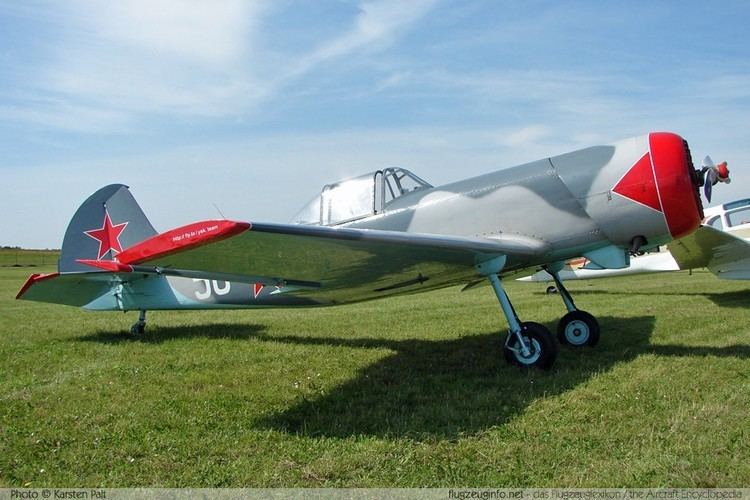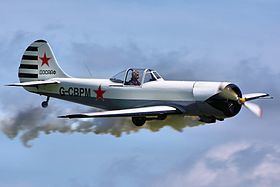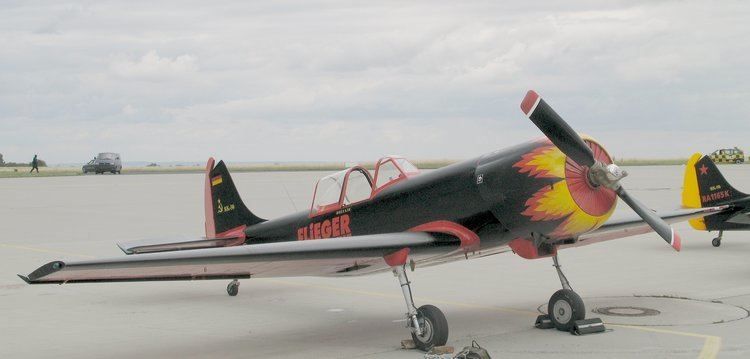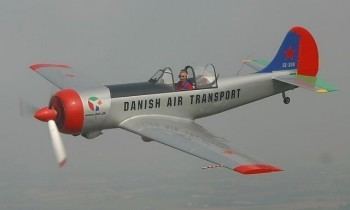Top speed 400 km/h Range 500 km Number of seats 1 Number built 314 | Wingspan 9.5 m Length 7.8 m Engine type Vedeneyev M14P | |
 | ||
The Yakovlev Yak-50 (Russian: Яковлев Як-50) aerobatic aircraft is a single-seat all-metal low-wing monoplane with retractable main wheels and exposed tail wheel. The control surfaces are fabric-covered to save weight. The aircraft is not equipped with flaps.
Contents

The supercharged engine may be the Vedeneyev M14P (standard production line version), M14PF or M14R, producing between 360 and 450 hp and driving the propeller via a reduction gearbox. The landing gear, brakes and engine starter are operated by compressed air. Replenished by an engine-driven compressor, the main and emergency air bottles are contained within the forward fuselage between the firewall and fuel tanks.

The Yak-50 had exceptionally fine handling characteristics enhanced by a relatively high power-to-weight ratio. It has a tough and agile airframe - the type was twice World Aerobatic Champion. It was used as a military trainer by several countries.

Aircraft serving with the Soviet National Aerobatic team were typically scrapped after about 50 flight hours, due to the intense stresses imposed on the airframe during unlimited aerobatics. There were numerous cases of main spar failure; among its victims were the 1976 World Aerobatic Champion Viktor Letsko and many others.

Two modifications (Service Bulletin 61DA for S/N 0102-2007 and Service Bulletin 79 for S/N 1201-2806) were made to strengthen the wings spars for the extreme loads experienced during unlimited aerobatics; and no further failures occurred.
Other aircraft serving with DOSAAF were "officially" scrapped or placed into storage after they were superseded by the Yak-55 and Su-26.
It is these aircraft that form the bulk of airworthy "survivors" today. Only a few (approx. 90+) are airworthy and remain in private hands in Europe, the USA and Australia.
Operators
Specifications
Data from Yak-50 Flight Manual & Technical Description handbook
General characteristics
Performance
